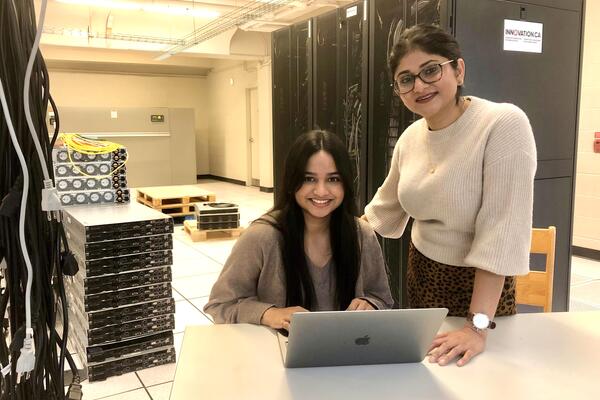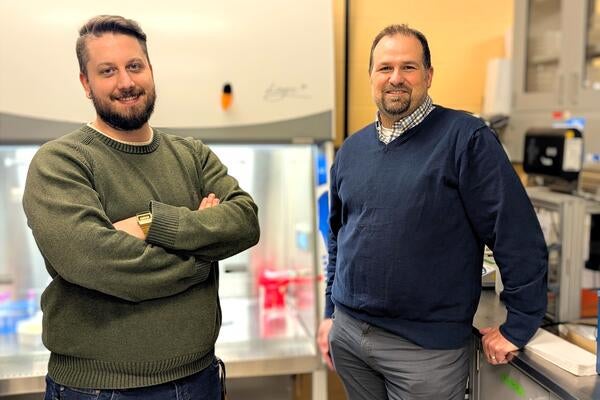
Protecting our drinking water for 20 years
Engineering professor works on green technology that removes more contaminants from water supply

Engineering professor works on green technology that removes more contaminants from water supply
By Bob Burtt Communications and Public AffairsTo serve and protect is a slogan that could describe Peter Huck’s career, but he’s not a police officer.
 Peter Huck, Natural Sciences and Engineering Research Council Chair in Water Treatment, University of Waterloo.
Peter Huck, Natural Sciences and Engineering Research Council Chair in Water Treatment, University of Waterloo.
For the past 20 years, Huck has devoted most of his academic life to making public water supplies safer.
“We will always need high quality water to drink and as our population increases and as we, as a society, develop substances that nature hasn’t seen before, the challenges won’t go away,” says Huck, a professor in the department of civil and environmental engineering.
Green technology
Most recently, Huck and his colleagues have worked on improving the performance of polymeric filter membranes, a system of filtration that is a newer alternative to traditional sand filters when it comes to removing undesirable compounds from drinking water.
“Under the right conditions, membranes can be an absolute barrier to micro-organisms” he says. “And it’s a green technology in the sense that it can reduce adding chemicals to the system.” The membranes are already being used in Barrie, Collingwood and Peel Region.
“We have spent a fair amount of time on trace contaminants and pharmaceuticals. We also work on trying to improve methods to detect pathogens in water,” says Huck.
Pharmaceuticals at low concentrations have been detected in various water bodies including the Grand River and are believed to be affecting fish and aquatic life in unwanted ways. “It is an area of active research, but it is very difficult to figure out what the effect on human health might be,” he says.
While there is an obvious need to remove disease-causing pathogens from our water, Huck says it is the less-well-understood chemicals in our drinking water — like pharmaceuticals flushed through our bodies and manufacturing chemicals washed from our clothes —for which the answers are less clear.
“It’s more difficult to determine the risk for pharmaceuticals and trace chemicals. The risk from these is more about long-term exposure,” Huck says. “We should probably take the prudent approach. I can’t imagine these things are doing us any good.”

Read more
Here are the people and events behind some of this year’s most compelling Waterloo stories

Engineering master's student Nayeema Nonta (left), one of the three paper authors, and her supervisor, Dr. Sirisha Rambhatla, in a large server room with the computer power needed to develop their new LLM training technique. (University of Waterloo)
Read more
Waterloo researchers develop highly efficient AI training system that paves the way for cheaper, greener “intelligent partners”

Read more
Engineering researchers team up to tackle the plastics pollution problem with microbial innovation and engineering design
The University of Waterloo acknowledges that much of our work takes place on the traditional territory of the Neutral, Anishinaabeg, and Haudenosaunee peoples. Our main campus is situated on the Haldimand Tract, the land granted to the Six Nations that includes six miles on each side of the Grand River. Our active work toward reconciliation takes place across our campuses through research, learning, teaching, and community building, and is co-ordinated within the Office of Indigenous Relations.